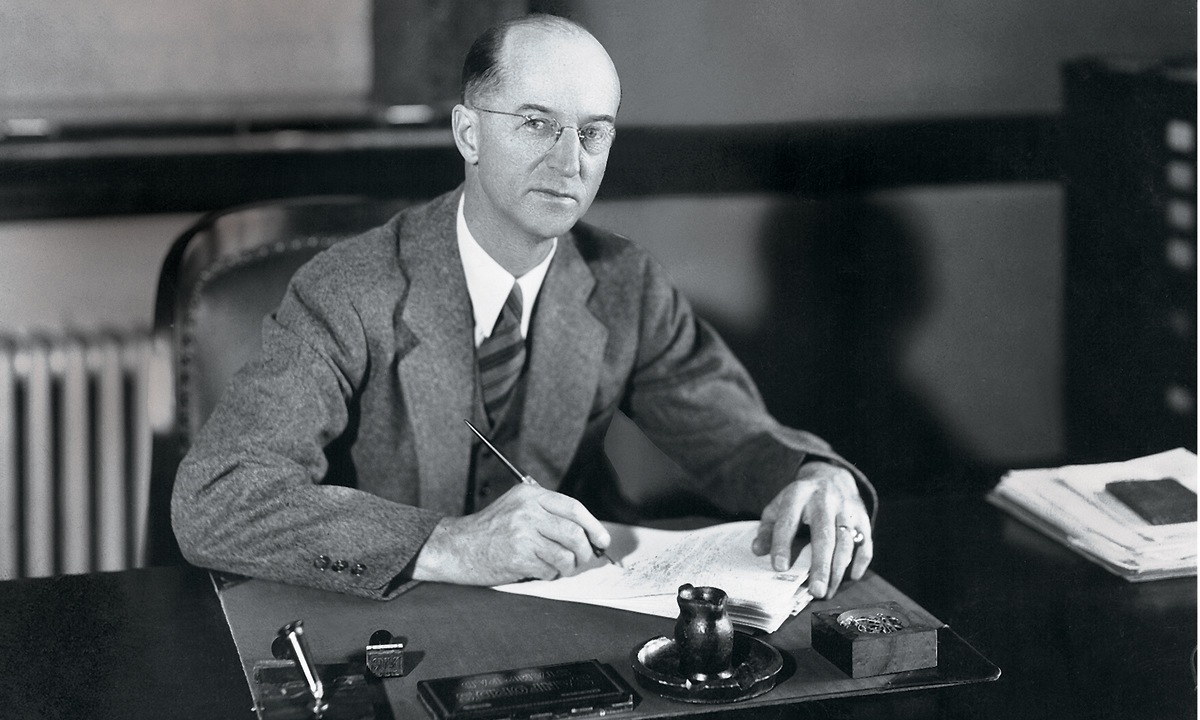Samuel Page Duke
Being the Change
Excerpts from Madison Century, a commemorative book by Martha Graham, Condensed from the article in Winter 2009 Madison
Duke also saw an inefficient heating system, an overworked laundry facility, faculty salaries that were not competitive, and a campus crisscrossed by clumsy boardwalks. He got right to work and over the next 30 years he would change the landscape of the physical campus dramatically as well as the landscape of academics. He would earn his nickname, “The Builder.”When Samuel Page Duke became the second president of the State Normal School for Women at Harrisonburg, he faced a school with few funds and a physical plant with great needs. More space was needed.
An active participant
Samuel Duke was a personable and athletic man, who took over the new school with an energetic blend of pragmatism and efficiency. His faculty found him “approachable, frank and absolutely honest,” according to historian [Ray] Dingledine. His office was the “nerve center of the institution” and he participated in every facet of the school, from athletic competitions to student dances to the development of a nine-hole golf course on campus.
Like his predecessor, Samuel Duke was only 33 when he became president. In the first 10 years of his tenure, the campus would gain five new buildings: Alumnae, Sheldon, Keezell with an indoor pool, Johnston and Varner, the first home economics practice house. He would also see the development of the first varsity basketball and swim teams, the first degrees awarded men, the first orchestra, and the first student publication, The Breeze.
Mission reflected in name
President Duke believed the mission of the school should be reflected in its name. Twice he encouraged the legislature to adopt a name which would reflect a broader mission. In 1924, the State Normal School for Women became the State Teachers College at Harrisonburg.
Fourteen years later, in 1938, President Duke would promote James Madison as the school’s [eponym] and Madison College as a name more accurately describing the school. …
In the decades that followed bringing coeducation and university status, the school’s name would become a cohesive force.
Debating a new college name
Debating a new college name, many local residents preferred to keep “Harrisonburg” as part of the school’s name. The more provincial “Harrison College” honoring both local educators and William Henry Harrison, the country’s Virginia-born and ninth president, also won considerable support locally.
President Duke, however, argued persuasively that the nation’s fourth president had been a champion of public schools and of higher education, in addition to being the “Father of the Constitution.”
President Duke’s choice prevailed and on June 12, 1938, the State Teachers College at Harrisonburg became Madison College. It was a choice the future would resoundingly affirm. In only a few decades, the horizons of the college, like Madison’s young nation, would expand far beyond the Shenandoah Valley and Harrisonburg. By the turn of the next century, the scope would be global.
Download the PDFs for the full version of this feature and all of Winter 2008 Madison. "The Madison Century's Madison College Era" begins on Page 34.
Click here to subscribe to
